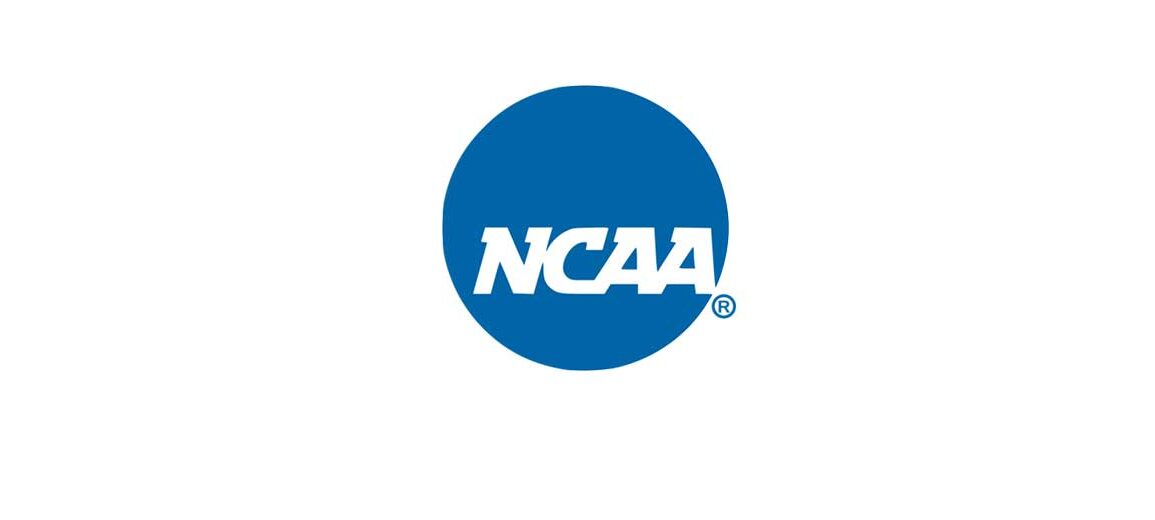It’s that time of the year again. Our Game Magazine‘s college editors Rachael Caldwell, JJ Duke, and Ruth Moore preview the Elite Eight round action of the 2014 NCAA Women’s Soccer Tournament. Joining in on the fun is Glenn Crooks, former women’s soccer head coach at Rutgers. They review the previous rounds, break down the upcoming matchups, opine on which teams have the easiest roads to the College Cup, highlight the players to watch, and offer thoughts on possible upsets.
Bracket Quadrant #1
Quarterfinal Match
- #2 Virginia v.s #1 UCLA, November 28th, 8pm ET
Los Angeles, Calif.
Thoughts on the Second and Third Rounds
All of the seeds seemed relatively unbothered in their second-round matchups. UCLA kept up the scoring spree, and both the Bruins and the Waves posted shutouts in Los Angeles. On the East Coast side of the bracket, host Virginia was held to a mere 3-0 by Rutgers and Kentucky had to work for a 3-1 win. But the tables turned for the third round, as Pepperdine held UCLA to a late 1-0 decision and Virginia got away with thrashing Kentucky, 7-0.
What Gives Virginia an Advantage in the Quarterfinals?
Virginia heads to Los Angeles with consistent and heavy momentum. The Cavaliers have shut out every opponent in their tournament run and their lowest scoring game was still a 3-0 result. They have a number of options in the attack, with eight players currently at double-digits in points this season. There is also the matter of their last meeting with the Bruins: a tense 1-1 draw in the 2013 College Cup semifinals, finally decided by a penalty kick shootout. Although both teams have been top-ranked all season, Virginia has lingered in UCLA’s shadow since last December and the Cavaliers are rightly convinced that this is their time to shine.
What Gives UCLA an Advantage in the Quarterfinals?
UCLA, of course, is still top seed and will be hosting what promises to once again be the biggest match of the year — just a little too early. As hard as it is to repeat as champions, the point stands that this is still a more experienced group of Bruins than the Cavaliers faced last year. They know they can win because they have won, and the memory of what it takes to go all the way should still be fresh. Comparing last week’s 1-0 result against Pepperdine to their opponent’s 7-0 blowout of the three-seed should be a good reminder to buckle down, in case anyone forgot.
Which Team Advances to the College Cup?
 I love this matchup, okay? I loved it last year and I love it this year, and both times I’m sitting here thinking that UCLA versus Virginia should be the final. Unfortunately, it’s not, and only one team can move on to the College Cup. Still, it should be an exciting game, with one of the most prolific offenses facing one of the most staunch defenses.
I love this matchup, okay? I loved it last year and I love it this year, and both times I’m sitting here thinking that UCLA versus Virginia should be the final. Unfortunately, it’s not, and only one team can move on to the College Cup. Still, it should be an exciting game, with one of the most prolific offenses facing one of the most staunch defenses.
The problem is, it is hard to repeat. And while UCLA has gone undefeated and delivered some blowouts this year, it’s also stumbled and even struggled at times. Virginia has faced close games and losses alike and should be hungry to make those learning experiences worthwhile.
So if there was ever going to be an upset in this quadrant, this would be it. Virginia over UCLA, preferably not in penalty kicks.
– by Ruth Moore
Bracket Quadrant #2
Quarterfinal Match
- #2 Florida vs. #1 Stanford, November 28th, 10pm ET
Palo Alto, Calif.
Thoughts on the Second and Third Rounds
There was a yin and yang feel in the second and third rounds of this bracket. The Gainesville region produced 12 goals in three matches while the Palo Alto region matches each were 1-nil struggles. I was a bit surprised to see all four seeds move on to the third round, especially in the Gainesville region, thinking upsets would occur at some point.
But Texas Tech overcame an early deficit against Auburn and advanced to its first Sweet 16 appearance in program history before giving Florida a run for its money. Meanwhile, Stanford got two goals from Lo’eau LaBonta on the weekend, a converted penalty kick against Arkansas on Friday and a rebound tap-in after a saved penalty on Sunday against Washington. The 1-0 Sunday scoreline is misleading though as Stanford created several scoring opportunities throughout its match against Washington but couldn’t add to its lead with Huskies’ goalkeeper Megan Kufeld making several crucial saves. At this stage, however, it doesn’t matter how teams win games as long as they keep winning.
What Gives Florida an Advantage in the Quarterfinals?
Its flow in the midfield will be a big factor in how Florida goes about this Elite Eight matchup. The Gators have shown they like to put the ball on the ground and attack teams with their speed and ability to play the killer pass to Savannah Jordan up top. But when things do start to get away from them, the Gators tend to start launching balls forward and that’s never a good thing in a tournament setting. It will be up to midfielders Annie Speese and Havana Solaun to keep things calm for Florida and try and find a hole in a Stanford defense that has posted 17 clean sheets in 2014. They know if they can win the midfield battle, they’re as good as any team out there. It’s all up to keeping your emotions in check with the knowledge that one win separates you from the College Cup.
What Gives Stanford an Advantage in the Quarterfinals?
Stanford has two advantages in this match. One is the knowledge that it’s figured out a way to win in different ways. They came from behind against Cal State Fullerton, they notched a win in a less-than-pleasing 1-0 match against Arkansas, and won by dictating play for nearly 90 minutes against Washington. The other advantage is the number 24. Stanford has won 24 straight matches at home in the NCAA tournament, a number that stands tall and can intimidate teams when coming into Palo Alto for postseason play. Sometimes just having that number creep into the mind of the opposition can give you that edge in a match of this magnitude.
Which Team Advances to the College Cup?
 Stanford and Florida played once this year in mid-September in Palo Alto, with the Cardinal winning 1-0 in overtime on a LaBonta penalty kick. Stanford out shot Florida 20-8 in that match. That early season West Coast “scouting trip” for Becky Burleigh will help the Gators in this matchup but I don’t see the Cardinal snapping their impressive home record in the NCAA tournament. Florida will strike early but LaBonta and Co. will find a way to claw back into the match and pick up a late winner, sending Stanford to its sixth College Cup appearance since 2008 with a 2-1 victory.
Stanford and Florida played once this year in mid-September in Palo Alto, with the Cardinal winning 1-0 in overtime on a LaBonta penalty kick. Stanford out shot Florida 20-8 in that match. That early season West Coast “scouting trip” for Becky Burleigh will help the Gators in this matchup but I don’t see the Cardinal snapping their impressive home record in the NCAA tournament. Florida will strike early but LaBonta and Co. will find a way to claw back into the match and pick up a late winner, sending Stanford to its sixth College Cup appearance since 2008 with a 2-1 victory.
– by JJ Duke
Bracket Quadrant #3
Quarterfinal Match
- #3 South Carolina vs. #1 Florida State, November 28th, 2pm ET
Tallahassee, Fla.
Thoughts on the Second and Third Rounds
37 seconds. This was all the time it took for South Carolina to define season-changing moments in both rounds last weekend at Fetzer Field, home of No. 2 seed North Carolina.
With time running out in regulation of their second-round encounter with parvenue Seattle, two-time All-SEC selection and senior captain Taylor Leach was booked for the second time and expelled for the remainder of the match, which included overtime and penalties. Observing online, it appeared that referee Moo Hackett regretted issuing the second yellow — perhaps unaware that Leach had already been booked (the red was shown only after a lengthy pause). South Carolina ultimately advanced on penalty kicks to reach its first NCAA quarterfinal but Leach would have to sit out the Sweet 16 match against the Tar Heels.
Less than 48 hours later and with precisely :37 remaining, Joanna Boyles’ attempt from close range was smothered by freshman reserve keeper Abbey Crider, a product of the local CASL club. The missile hit Crider directly in the mid-section and accompanied a momentary loss of breath — seconds later she would be mobbed by her delirious teammates after eliminating the Tar Heels, who were playing in their 33rd consecutive Sweet 16. Against Seattle, Crider made two huge saves in the penalty shootout, the first penalty kick round at any level in her career. All-SEC First Team keeper Sabrina D’Angelo, who had two penalty saves in the opening round against Clemson, damaged her right arm while training early in the week. Crider understood on Wednesday that she would make her NCAA tournament debut two days later at a field where she had trained as a youth.
In the Florida Panhandle, the top-seeded Seminoles defeated Northeastern, 3-0, then Central Florida, 1-0, on a deceptive set piece designed that week on the FSU training ground. Michaela Hahn played on the deck to Isabella Schmid whose first-time service in front of goal was finished by Kristin Gubka, her fourth in all NCAA competitions.
What Gives South Carolina an Advantage in the Quarterfinals?
For South Carolina, part of an SEC triad that joins the Elite Eight, it begins with confidence and that will fail to be an issue after advancing against the preeminent program in NCAA soccer history without its two most decorated players and senior captains, Leach and D’Angelo. Despite the paucity of goals, South Carolina offers the trio of Sophie Groff (6 goals), Raina Johnson (5 goals, including the winner at North Carolina), and freshman Savannah McCaskill (5 goals), who have capitalized at critical moments throughout the year. If permitted to connect in Tallahassee, the Gamecocks will be poised to knock off the No. 1 seed. They’ve allowed more than one goal only twice this year, permitting a pair each to formidable Florida (58 goals) and the greyhounds at Texas A&M (68 goals). That leaves just seven goals against in its other 22 matches. Florida State can also be explosive, but against organized defenses that are attentive to details, they can be contained.
What Gives Florida State an Advantage in the Quarterfinals?
The occasion to be home is a significant asset for any match — even more so at this time of the season when the aggregate of training, travel, and competition since early August can lead to exhaustion and physical breakdowns. On Wednesday, South Carolina hopped on a bus for the 6-1/2 hour ride from Columbia to Tallahassee where Florida State has won 18 consecutive NCAA matches and 34 of 35 at the Seminole Soccer Complex.
Dagný Brynjarsdóttir has scored as many goals (16) as the top three finishers for South Carolina. Athleticism, pace, sophistication, savvy, physicality — Florida State has the complete assortment and its first two reserves rank No. 2 and No. 4 in the Seminoles’ scoring column. On the defending side, the ‘Noles, with keeper Cassie Miller, permit goals with even less frequency than their next foe. Florida State has surrendered a stingy 9 against in 23 contests and three straight clean sheets ahead of the Elite Eight confrontation.
Which Team Advances to the College Cup?
 While it’s each team’s ambition to win a national championship, few can claim with confidence that they can fulfill that objective. Florida State has permission to aspire to that level of certainty based on three consecutive appearances in the College Cup, including a 1-nil overtime setback to UCLA in the 2013 NCAA Championship Final.
While it’s each team’s ambition to win a national championship, few can claim with confidence that they can fulfill that objective. Florida State has permission to aspire to that level of certainty based on three consecutive appearances in the College Cup, including a 1-nil overtime setback to UCLA in the 2013 NCAA Championship Final.
South Carolina hasn’t allowed a goal in roughly 314 minutes, which is beyond commendable considering the advanced difficulty each round of the tournament presents. On the attacking side, the Gamecocks have the ability to keep the ball but their goal against the Tar Heels ended a scoring dearth at 366 minutes.
Soccer is cruel and the best side doesn’t always prevail. Florida State has vast experience and talent combined with astonishing NCAA success on its home turf. Add in the lack of a consistent scoring threat for the Gamecocks and the Seminoles should leverage their way to Boca Raton.
– by Glenn Crooks
Bracket Quadrant #4
Quarterfinal Match
- #2 Penn State vs. #1 Texas A&M, November 29th, 6pm ET
College Station, Texas
Thoughts on the Second and Third Rounds
All of my predictions were actually correct this time around, so I guess you could say I’m pretty pleased with how things went. In all seriousness, the insanity of Virginia Tech versus Georgetown was one of the games of the tournament (although perhaps South Carolina versus Seattle got a little wilder), and just really personifies how there is no way to know what to expect game in and game out. I had counted out Georgetown in the first round, and this team ended up being just a goal away from the final 16 teams. Not bad. Also, my potential upset pick in Texas put up a great fight against Notre Dame. It will be interesting to see if the Longhorns can remain nationally relevant or if this was a blip on the radar.
Texas A&M was clearly more challenged by Notre Dame than it was in its first two matches. After taking the lead in a fairly even first half, the Aggies dealt with a full-on barrage from Notre Dame, which out shot the Aggies, 12 to 5, in the second half. Texas A&M also lost the corner kick battle 8 to 5. If not for a late defensive mistake from the Fighting Irish, we would have more than likely seen extra time or penalties decide this match. That being said, the Aggies never looked truly rattled. That could be due to their amazing home-field advantage or that this team still has it eyes set on the College Cup no matter what. Penn State surely won’t gift Texas A&M a game-winning goal, so the Aggies will have to bring the aggressive offense we saw in the first two rounds.
Speaking of Penn State, its match with Virginia Tech was a tight but even affair, with the Nittany Lions’ veteran players keeping their heads cool and guiding their team to the Elite Eight. They were even with Virginia Tech on shots, both had 11, but this game never seemed out of Penn State’s control. They’re a collected team that offers a nice contrast to Texas A&M, but more about that below.
What Gives Penn State an Advantage in the Quarterfinals?
As I mentioned above, you could think of Penn State as a foil to Texas A&M. In all the ways that the Aggies are flashy and fast on the field, the Nittany Lions are calm and determined. The Nittany Lions can grind out wins, with eight of their regular-season victories coming by a one-goal differential mostly due to a solid defense. Penn State hasn’t allowed opponents to score more than one goal since early September. I’m not sure Texas A&M has faced anyone as strong defensively this season (disregarding its early season exhibition against UCLA) except for maybe South Carolina, who they scored a total of three goals against over two games against this season. That could lead to some frustration for the No. 1 seed.
Now, none of this is meant to discredit the offense that Penn State can create. Juniors Mallory Weber and Raquel Rodriguez have done an excellent job this season, and netted goals to send their squad to the Elite Eight. Another bright spot has been freshman Frannie Crouse, who is the only double-digit goal scorer on the team. While it’s hard to bank on a freshman turning in a solid performance in a hostile environment with win-or-go-home pressure hanging in the air, Crouse has a team full of experienced players to back her up. To put it simply, Penn State’s strengths are players who keep their heads level, a solid defense that minimizes mistakes, and an offense that can provide the goals necessary to win.
What Gives Texas A&M an Advantage in the Quarterfinals?
Speed, speed, and more speed. The Aggies can fly through the middle of the field and down the wings. With a trio of forwards who have combined for 25 goals this season, that doesn’t even include the offensive contributions of midfielders Kelley Monogue or Shea Groom. Texas A&M can put five on the scoreboard before you can say “gig ’em” or even attempt to figure out what that means. The Aggies have three, yes THREE, double-digit goal scorers this season, and have outscored opponents 68 to 23 on the season. I praised the Nittany Lions’ defense just a section above, but in my opinion, they haven’t played a single team that comes close to this kind of offensive pressure their defense will be dealing with throughout the game. It’s not just the forwards, either. Midfielder and captain Groom has been garnering all the attention for this team, and deservedly so with 16 goals on the season, but Monogue has been the team’s best strength. She leads the team in goals (17) and assists (10). That’s essentially five players for the Aggies that can seemingly score at will.
Now let’s talk defense. Meghan Streight is such an underrated part of this team. The senior center back leads an organized defense that posted a shutout in every game of the SEC tournament. However, when your offense is as good as Texas A&M’s, you really don’t place that much concern in making sure the other team doesn’t score. One goal against doesn’t matter much when you’re placing four in the back of the net. That being said, if the Penn State defense can shut down the Aggies’ high-flying offense, how will the defense respond? I think that’s the ultimate question here. The Texas A&M defense has been of the bend-but-don’t-break variety this season, and that could hurt them against a Penn State team that will finish the chances they get. The Aggies’ strengths lie solidly in the offense, their ability to get forward and burn you with speed, and a defense that can hold out until the offense puts goals on the board.
Which Team Advances to the College Cup?
 This is tough. I think the first team to score in this game wins the game. Now, which team is that? This game goes one of two ways.
This is tough. I think the first team to score in this game wins the game. Now, which team is that? This game goes one of two ways.
Option number one sees Texas A&M strike fast, getting out to a 1-0 lead it holds until halftime. Penn State responds to tie the match fairly early in the second half, but then the floodgates open for the Aggies. They win it 3-1 and are the first SEC team to advance to the College Cup since 2001.
Option number two involves a scoreless first half, which sees the Aggies’ frustration levels rise. The Nittany Lions net two in the second half and have a defensive showing that inspires the masses. Shea Groom will net a consolation goal late for Texas A&M, but it means little as Penn State marches on to the College Cup.
Which one will happen? Well, last year I was admittedly very high on this Texas A&M squad. I even had them upsetting North Carolina, which we all know definitely didn’t happen. Therefore, I’m not letting that happen again. I don’t think Texas A&M’s defense can outlast Penn State’s defense. So, yes, after putting Penn State on upset alert against Buffalo, I have them booking a spot in the College Cup.
– Rachael Caldwell
[divider]Contributors[/divider]
Rachael Caldwell will be graduating from the University of Arkansas in 2015 with a degree in Broadcast Journalism and minors in Spanish and Business Management. Rachael played soccer from when she was three until her senior year of high school, where she was the captain of her state championship winning team. Rachael looks forward to writing more for Our Game Magazine and also writes about women’s soccer on her blog, rachaelfc.wordpress.com.
Glenn Crooks is the former Head Women’s Soccer Coach at Rutgers University. Crooks is currently a soccer commentator for the Big Ten Network, FIOS, and Sky Blue FC of the National Women’s Soccer League. He is also head coach of the Players Development Academy, N.J. Olympic Development Program, and a staff coach at U.S. Soccer National Training Centers, as well as a coach advisor for Polar USA. Follow Crooks on twitter at @GlennCrooks.
JJ Duke graduated from Rider University in New Jersey with a degree in Digital Media Studies. Although his playing days may have ended back in high school, he still prides himself on being a decent shot-stopper and an all-around fanatic of the beautiful game (fervent supporter of Manchester United and the founder of a Rider supporters group, the 206 Ultras).
Ruth Moore serves Our Game Magazine as a College Editor and the magazine’s Design Editor. She holds a degree in Professional Writing from Kutztown University, freelances in communication design, and loves coffee.

